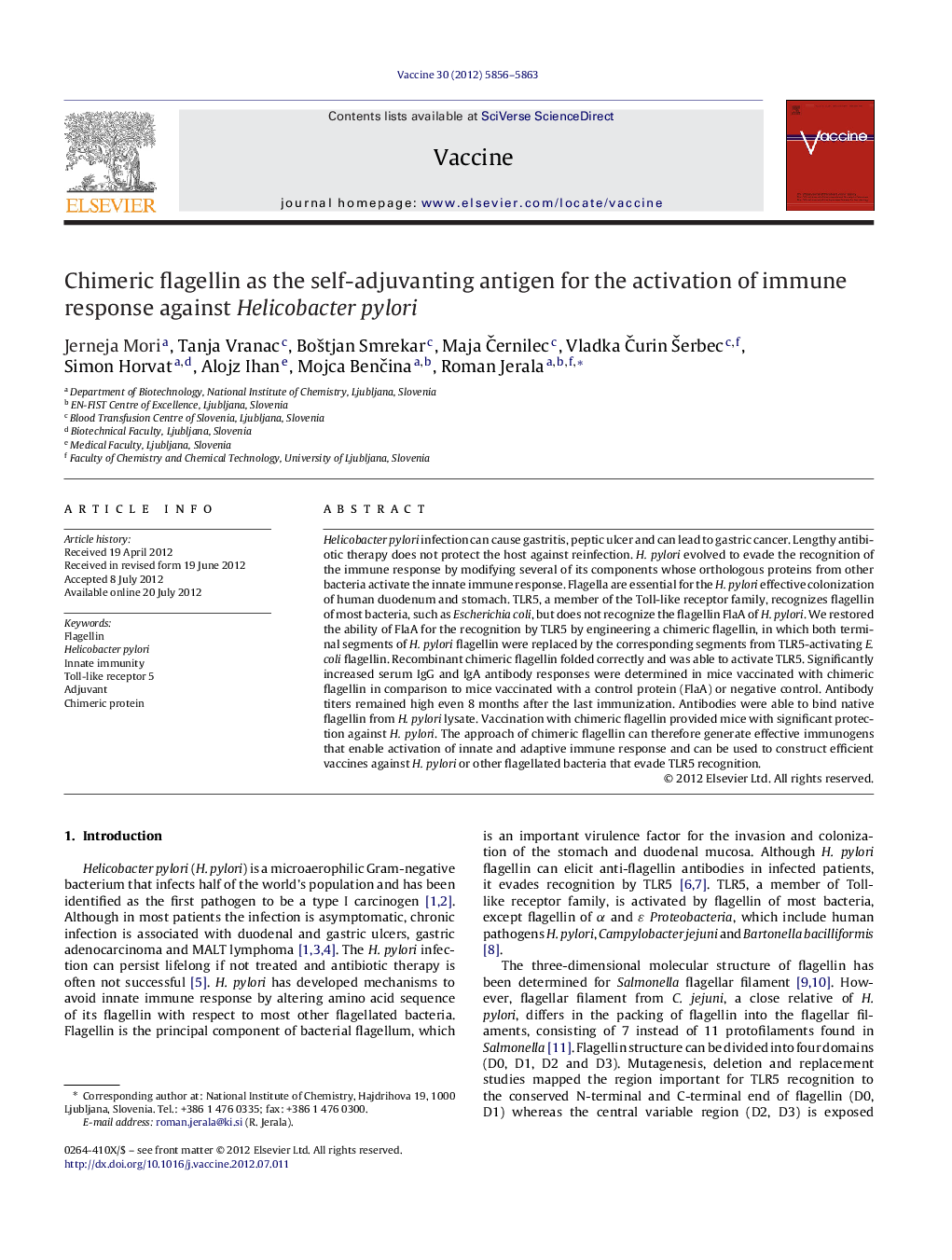| Article ID | Journal | Published Year | Pages | File Type |
|---|---|---|---|---|
| 2404182 | Vaccine | 2012 | 8 Pages |
Helicobacter pylori infection can cause gastritis, peptic ulcer and can lead to gastric cancer. Lengthy antibiotic therapy does not protect the host against reinfection. H. pylori evolved to evade the recognition of the immune response by modifying several of its components whose orthologous proteins from other bacteria activate the innate immune response. Flagella are essential for the H. pylori effective colonization of human duodenum and stomach. TLR5, a member of the Toll-like receptor family, recognizes flagellin of most bacteria, such as Escherichia coli, but does not recognize the flagellin FlaA of H. pylori. We restored the ability of FlaA for the recognition by TLR5 by engineering a chimeric flagellin, in which both terminal segments of H. pylori flagellin were replaced by the corresponding segments from TLR5-activating E. coli flagellin. Recombinant chimeric flagellin folded correctly and was able to activate TLR5. Significantly increased serum IgG and IgA antibody responses were determined in mice vaccinated with chimeric flagellin in comparison to mice vaccinated with a control protein (FlaA) or negative control. Antibody titers remained high even 8 months after the last immunization. Antibodies were able to bind native flagellin from H. pylori lysate. Vaccination with chimeric flagellin provided mice with significant protection against H. pylori. The approach of chimeric flagellin can therefore generate effective immunogens that enable activation of innate and adaptive immune response and can be used to construct efficient vaccines against H. pylori or other flagellated bacteria that evade TLR5 recognition.
► Chimeric flagellin was composed of E. coli FliC and H. pylori FlaA domains. ► Chimeric flagellin activates innate immune response through TLR5 activation. ► Variable domains of H. pylori FlaA represent the immunodominant epitopes. ► Chimeric flagellin acted as adjuvant eliciting strong serum IgG antibody response. ► Chimeric flagellin with alum protects mice against H. pylori colonization.
